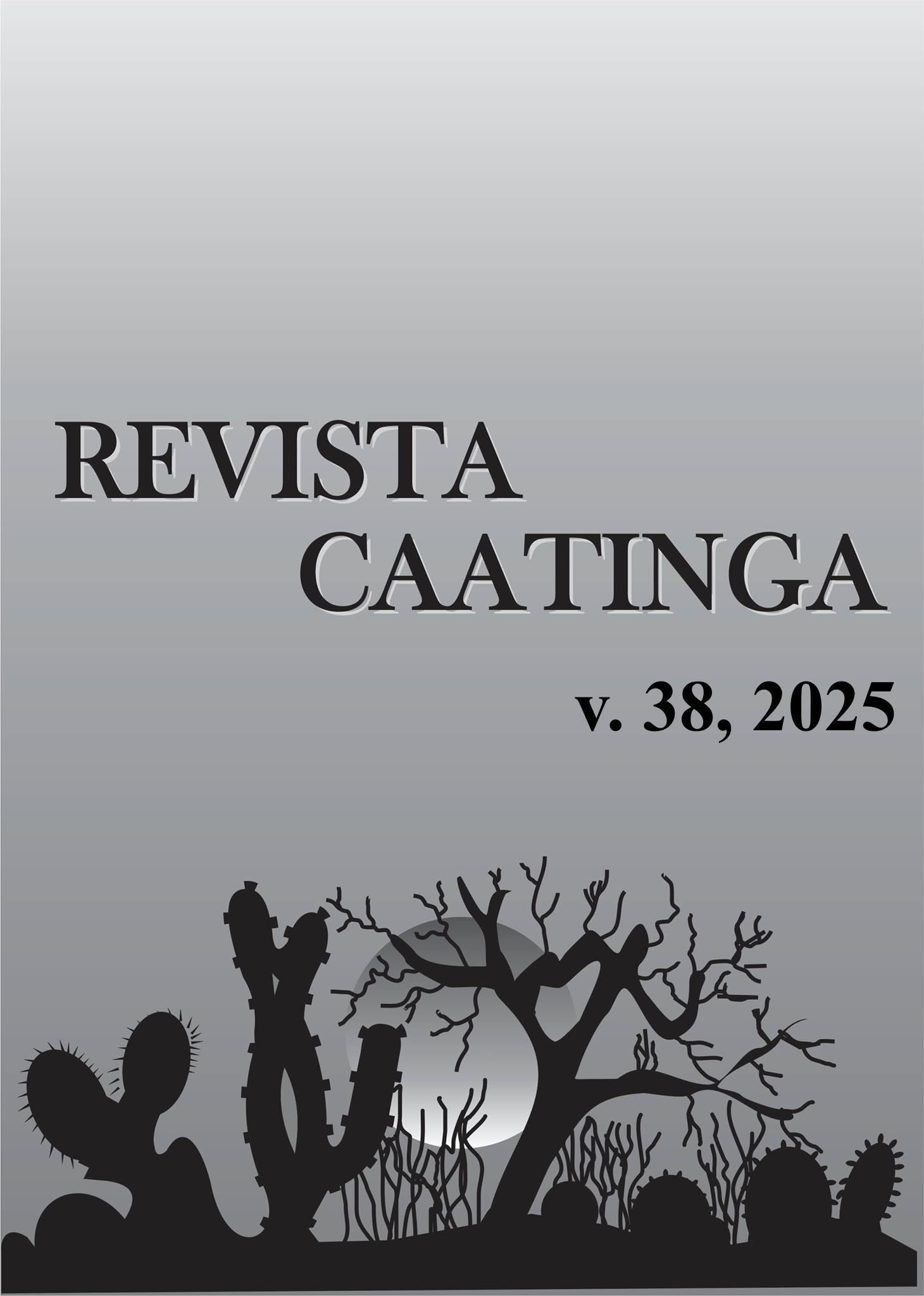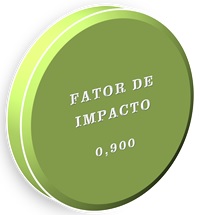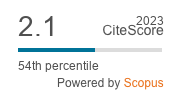Effect of biochar soaked in wood vinegar on cowpea production and root growth
DOI:
https://doi.org/10.1590/1983-21252025v3812749rcKeywords:
Pyrolysis products. Soil amendment. Growth regulator. Vigna unguiculata (L.) Walp.Abstract
Pyrolysis of woody biomass produces biochar, whose application aims to promote positive effects on the soil, crops and the environment, and wood vinegar (WV), which is used as growth regulator and pesticide. Cowpea (Vigna unguiculata (L.) Walp) is of great importance worldwide and, in Brazil, it is predominantly produced by family farming in the Northeast region, mainly in soils with low fertility and low productivity. In this context, this study aimed to verify the possibility that the application of biochar, pure or soaked in WV, improves the performance of cowpea crop. To this end, an experiment was conducted in two seasons in a greenhouse, in a completely randomized design, in which doses and types of biochar were tested. Grains were harvested green in four replicates of the treatments and harvested dry in the other four replicates. The determinations made were: number of pods, pod length, number of grains per pod, grain production per pot and root dry mass. The results obtained do not allow us to recommend the application of wood vinegar impregnated in biochar in cowpea. However, biochar application can be recommended at doses between 6.0 and 9.0 Mg ha-1, which can be reduced to 4.0 to 6.0 Mg ha-1 in the presence of mineral fertilization. Studies addressing the joint application of biochar and pyroligneous extract should address different doses, forms of application, raw materials, soil types, and crops.
Downloads
References
ADEKIYA, A. O.; AYORINDE, B. B.; OGUNBODE, T. Combined lime and biochar application enhances cowpea growth and yield in tropical Alfisol. Scientific Reports, 14: 1389, 2024.
AKLEY, E. K. et al. Wood vinegar promotes soil health and the productivity of cowpea. Agronomy, 13: 2497, 2023.
ALBUQUERQUE, F. B.; MELO, R. R.; PIMENTA, A. S. Mini-rectangular kiln to produce charcoal and wood vinegar. Floram, 31: e20240022, 2024.
ARAUJO, K. C. Avaliação de linhagens melhoradas de feijão-caupi (Vigna unguiculata L. Walp.) na região noroeste fluminense para estudo de valor de cultivo e uso. 2019. 114 f. Tese (Doutorado em Produção Vegetal: Área de Concentração em Produção Vegetal) - Universidade Estadual do Norte Fluminense Darcy Ribeiro, Campos dos Goytacazes, 2019.
BASTOS, E. A. et al. Calibração do modelo CROPGRO-cowpea para simulação do crescimento e rendimento de grãos de feijão-caupi com e sem deficit hídrico. Teresina, PI: Embrapa Meio-Norte, 2023. 24 p. (Embrapa Meio-Norte. Boletim de Pesquisa e Desenvolvimento, 149).
CARRIL, P. et al. Effects of wood distillate (pyroligneous acid) on the yield parameters and mineral composition of three leguminous crops. Environments, 10: 126, 2023.
CONAB - Companhia Brasileira de Abastecimento. Previsão de safra por produto, outubro de 2023. Feijão caupi total. 2023. Disponível em: <https://www.conab.gov.br/info-agro/safras/graos>. Acesso em: 11 Mar. 2024.
DU, H. G. et al. Effect of the mixture of charcoal with pyroligneous acid on shoot and root growth of sweet potato. Japanese Journal of Crop Science, 67: 149–152, 1998.
FAO - Food and Agriculture Organization. The state of the world’s land and water resources for food and agriculture – Systems at breaking point. Main report. Rome: FAO, 2021. 62 p.
FEIJÓ, F. M. C. et al. Efficiency of pyroligneous extract from jurema preta (Mimosa tenuiflora [Willd.] Poiret) as an antiseptic in cats (Felis catus) subjected to ovariosalpingohysterectomy. Animals, 12: 2325, 2022.
GREWAL, A.; ABBEY, L.; GUNUPURU, L. R. Production, prospects and potential application of pyroligneous acid in agriculture. Journal of Analytical and Applied Pyrolysis, 135: 152-159, 2018.
IDOWU, O. et al. Effect of the interaction between wood vinegar and biochar feedstock on tomato plants. Journal of Soil Science and Plant Nutrition, 23: 1599–1610, 2023.
JINDO, K. et al. Sustainable plant growth promotion and chemical composition of pyroligneous acid when applied with biochar as a soil amendment. Molecules, 27: 3397, 2022.
JEFFERY, S. et al. A quantitative review of the effects of biochar application to soils on crop productivity using meta-analysis. Agriculture, Ecosystems & Environment, 144: 175-187, 2011.
KADOTA, M.; NIIMI, Y. Effects of charcoal with pyroligneous acid and barnyard manure on bedding plants. Scientia Horticulturae, 101: 327-332, 2004.
LUO, X. et al. Effect of co-application of wood vinegar and biochar on seed germination and seedling growth. Journal of Soils and Sediments, 19: 3934–3944, 2019.
METE, F. Z et al. Synergistic effects of biochar and NPK fertilizer on soybean yield in an alkaline soil. Pedosphere, 25: 713-179, 2015.
MIRANDA, N. O. et al. Effect of biochar application on production parameters of two cowpea cultivars planted in succession in five soils from the Brazilian semiarid region. Arabian Journal of Geosciences, 13: 506, 2020.
MORALES, M. M. et al. Wood vinegar: chemical characteristics, phytotoxic effects, and impacts on greenhouse gas emissions. Nativa, 10: 400-409, 2022.
MOOSAVI, S. A. et al. Integrated application of biochar and bio-fertilizer improves yield and yield components of cowpea under water-deficient stress. Italian Journal of Agronomy, 15: 94-101, 2020.
MUNGKUNKAMCHAO, T. et al. Wood vinegar and fermented bioextracts: Natural products to enhance growth and yield of tomato (Solanum lycopersicum L.). Scientia Horticulturae, 154: 66–72, 2013.
NOVOTNY, E. H. et al. Biochar: pyrogenic carbon for agricultural use - a critical review. Revista Brasileira de Ciência do Solo, 39: 321-344, 2015.
OFOE, R. et al. Foliar application of pyroligneous acid acts synergistically with fertilizer to improve the productivity and phytochemical properties of greenhouse-grown tomato. Scientific Reports, 14: 1934, 2024.
RAFAEL, R. B. A. et al. Benefits of biochar and NPK fertilizers for soil quality and growth of cowpea (Vigna unguiculata L. Walp.) in an acid arenosol. Pedosphere, 29: 311–333, 2019.
SILVA, D. W. et al. Efeito do extrato pirolenhoso no desenvolvimento inicial de plantas de milho e feijão. Revista Eletrônica Científica da UERGS, 7: 93-102, 2021.
SILVA, M. B. O. et al. Desempenho agronômico de genótipos de feijão- caupi. Revista de Ciências Agrárias, 41: 1059-1066, 2018.
SON, T. K. et al. Effect of a mixture of charcoal and pyroligneous acid applied to the soil at different fertilizer levels on the growth and yield of rice. Japanese Journal of Crop Science, 72: 345-349, 2003.
STREUBEL, J. D. et al. Influence of contrasting biochar types on five soils at increasing rates of application. Soil Science Society of America Journal, 75: 1402-1413, 2011.
TOGORO, A. H.; SILVA J. A. S.; CAZETTA J. O. Chemical changes in an oxisol treated with pyroligneous acid. Ciência e Agrotecnologia, 38:113-121, 2014.
ZHANG, Y. et al. Comparative study of individual and co-application of biochar and wood vinegar on blueberry fruit yield and nutritional quality. Chemosphere, 246: 125699, 2020.
Downloads
Published
Issue
Section
License
Os Autores que publicam na Revista Caatinga concordam com os seguintes termos:
a) Os Autores mantêm os direitos autorais e concedem à revista o direito de primeira publicação, com o trabalho simultaneamente licenciado sob a Licença Creative Commons do tipo atribuição CC-BY, para todo o conteúdo do periódico, exceto onde estiver identificado, que permite o compartilhamento do trabalho com reconhecimento da autoria e publicação inicial nesta revista, sem fins comerciais.
b) Os Autores têm autorização para distribuição não-exclusiva da versão do trabalho publicada nesta revista (ex.: publicar em repositório institucional ou como capítulo de livro), com reconhecimento de autoria e publicação inicial nesta revista.
c) Os Autores têm permissão e são estimulados a publicar e distribuir seu trabalho online (ex.: em repositórios institucionais ou na sua página pessoal) a qualquer ponto antes ou durante o processo editorial, já que isso pode gerar alterações produtivas, bem como aumentar o impacto e a citação do trabalho publicado (Veja O Efeito do Acesso Livre).







